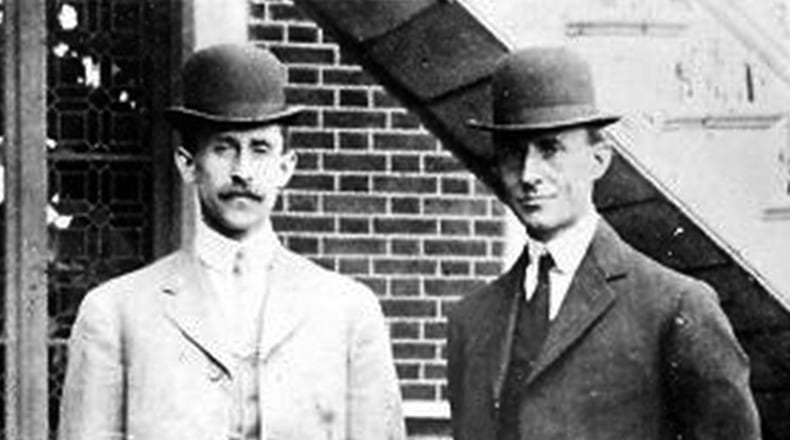Credit: John T. Daniels
Credit: John T. Daniels
Dayton is probably best known for the Wright brothers. The invention of the powered airplane changed the world and brought attention to their hometown of Dayton in many ways. The city is filled with landmarks and other references to the Wright brothers’ accomplishments.
Numerous places in Dayton are critical to the history of flight and wonderful places to commemorate our aviation legacy. Here are five of them.
Manhattan Project
Without the work done in Dayton, the atomic bombs dropped in Japan, effectively ending World War II, might not have gone off.
Work on the Manhattan Project, the secret government effort to build an atomic bomb was done in many cities, including Dayton.
The most important work done in what was called the Dayton Project, was the manufacturing of the triggers that start the atomic chain reaction in the bombs.
Charles Allen Thomas, a research director at Dayton’s Monsanto Chemical Company, was among a handful of internationally known scientists who oversaw the development of the polonium trigger, a key technical hurdle in bomb production.
Dayton Peace Accords
Credit: MICHAEL HEINZ
Credit: MICHAEL HEINZ
The negotiations that led to an agreement on Nov. 21, 1995 at the Wright-Patterson Air Force Base put an end to the atrocities of the Bosnia war, a bloody conflict that destroyed many lives and tore families apart.
The NATO Parliamentary Assembly is meeting in Dayton to commemorate the 30th anniversary of those Dayton Peace Accords.
By the time of the talks, that war had lasted for almost four years. It had taken some 250,000 lives and created two million refugees — Europe’s bloodiest conflict since World War II.
The agreement hammered out after 21 days of negotiations at the Hope Hotel at WPAFB — formally signed a month later in Paris — stopped the war between Bosnian, Croat and Serb forces, and provided a constitution for Bosnia and Herzegovina.
Code-breaking
Dayton inventor Joseph Desch became a hero for his groundbreaking work on U.S. Navy bombes — the machines that broke Nazi German four-rotor enigma naval codes and helped to bring an end to World War II.
An electrical engineer at National Cash Register, he helped build what is believed to be the world’s first vacuum-tube-driven computing device, the electronic accumulator primed the world for first-generation computers.
In 1942 and 1943, Desch headed a top-secret program at National Cash Register to develop an American version of the code-breaking Bombe that could break the four-rotor Enigma machine.
One reason Desch was selected was because of his and NCR’s work on inventing the first electronic calculator.
The bombe was so successful it is thought to have saved thousands of lives.
Pop-top cans
Thank Ermal Fraze next time you pop open a cold one.
Ermal Cleon Fraze, called “Ernie” by family members, co-workers and friends, invented the original pop-top can opener and forever changed the way people around the world open beer, soft drinks and many other cans.
While on a family picnic with friends, he tried to open a can of beer but didn’t have a can opener, so he used a car bumper to open it and thought, “There must be a better way.”
Fraze obtained the first patent for a pop-top can in 1963. At the time it was called several things including “ring-pull,” “tab-top,” “zip-top” or “pop-top.”
In 1977, Fraze modified his invention and patented the ‘push-in and fold back tab” to reduce litter and prevent cuts caused by the previous version.
Electric Car Starter
United States patent No. 1,150,523 revolutionized the automobile industry.
It was awarded to Dayton innovator Charles F. Kettering, whose invention, “engine starting device,” was patented on Aug. 17, 1915.
Kettering, along with Col. Edward A. Deeds and several more NCR engineers, spent their spare time developing those “certain new and useful improvements” detailed in the patent in Deed’s barn on Central Avenue.
Known as the “Barn Gang” the group successfully developed the new ignition in 1910. Kettering’s idea would save motorists from the often back-breaking and sometimes dangerous job of crank-starting their engines.
By 1912, the electric starters had been installed on 8,000 new Cadillacs and by 1920 nearly all car manufacturers had installed the Delco ignition system as standard equipment.
About the Author






